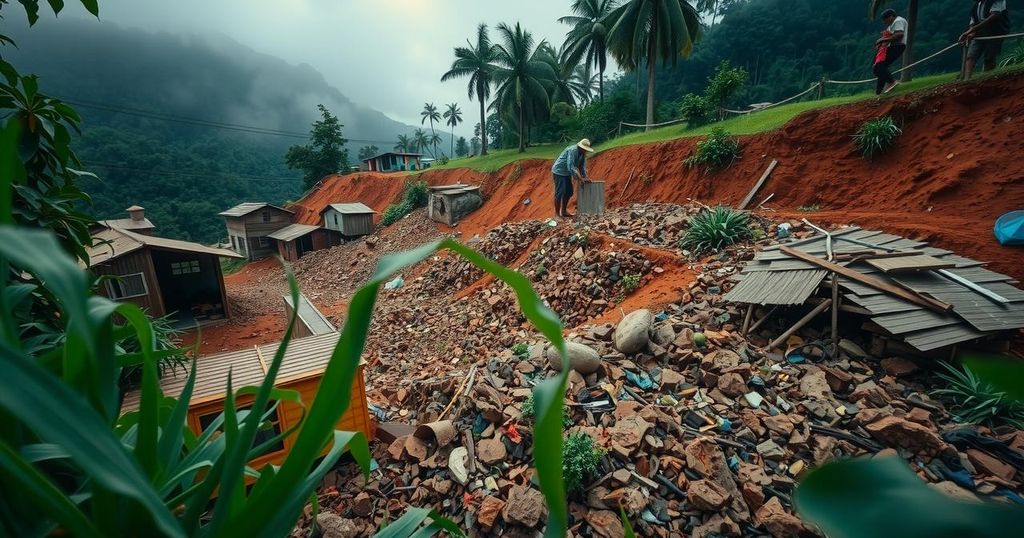At least 15 people have died and 113 are missing following landslides in eastern Uganda that buried homes in six villages. Heavy rains caused the landslides in Bulambuli district, and local authorities fear the death toll could rise. Rescue efforts are underway, with 15 individuals treated for injuries, while search operations are hampered by mud-covered roads.
In eastern Uganda, a devastating series of landslides has resulted in at least 15 confirmed fatalities, with an additional 113 individuals reported missing. The tragedy unfolded across six villages, where heavy rains caused landslides to bury approximately 40 homes. So far, 15 individuals have been rescued and are receiving medical treatment at Buluganya Health Center. As rescue operations continue, local authorities express concern that the death toll may rise to as high as 30 due to the severity of the situation. The Bulambuli district, approximately 280 kilometers east of Kampala, is particularly susceptible to such disasters following heavy rainfall, which was prevalent on the night preceding the landslides.
Reports indicate that local media outlets have captured the scene, with rescuers digging through thick mud in a desperate search for victims. Some homes are entirely submerged in mud, with only rooftops visible. The Prime Minister’s office has issued disaster alerts revealing that persistent rainfall has further hampered rescue efforts, leading to significant road blockages. Additionally, during rescue attempts along the River Nile, two boats capsized due to the adverse conditions, emphasizing the widespread impact of the ongoing rains throughout the region.
Landslides in Uganda are a recurrent problem, particularly in mountainous regions such as Bulambuli, where the geography combined with heavy rainfall creates a hazardous environment. The recent tragedies underscore the vulnerabilities faced by communities living in these areas, often constructed on sloped terrain that is susceptible to erosion and natural disasters. As climate change intensifies weather patterns, including erratic rainfall, the frequency and severity of such landslides may increase, necessitating improved disaster preparedness and response protocols on a national level. In addition to immediate search and rescue operations, the government and humanitarian organizations need to evaluate long-term strategies to support affected families, mitigate future risks, and improve infrastructure resilience in these vulnerable regions.
The recent landslides in eastern Uganda have tragically claimed the lives of at least 15 individuals, with many others unaccounted for as search operations continue. The situation highlights the persistent dangers posed by heavy rainfall in an already vulnerable region. As rescue efforts progress, authorities are concerned about potential rising casualties and the extensive impact on local communities. The need for robust disaster management and preventive strategies in light of changing climatic conditions has never been more pressing.
Original Source: edition.cnn.com







